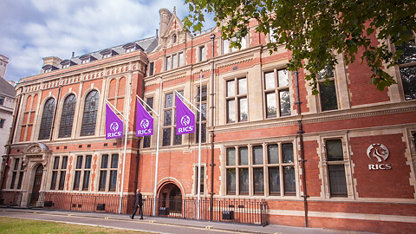India’s sustainable infrastructure in the pace of urbanisation
India’s sustainable infrastructure is facing severe challenges due to the rapid pace of urbanisation. While there have been some efforts towards sustainable development, such as the Smart Cities Mission and the Atal Mission for Rejuvenation and Urban Transformation, these initiatives face various constraints such as inadequate financial resources, inadequate planning, and lack of public awareness.
Moreover, is the need for better planning and policy frameworks to promote sustainable development. These should include a focus on integrated urban planning, which takes into account environmental sustainability, social equity, and economic growth. It is also essential to involve communities in the planning and decision-making process to ensure their needs and aspirations are considered.
More people than ever before are rising out of poverty, carrying with them expectations of a better standard of living. Can we build enough homes for them?
Brazil
Brazil’s Minha Casa Minha Vida scheme has resulted in 2.5 million new homes in just over five years. Lise Alves, senior contributing editor, The Rio Times asks: are they in the right place?
Hailed as the largest housing programme in Brazil’s history, Minha Casa Minha Vida (My House My Life) has received both praise and criticism in its almost eight years of existence. Created in 2009 by former president Luiz Inácio Lula da Silva, Minha Casa Minha Vida promised to fulfil the dream of home ownership for millions of low-income families who were excluded from previous state-backed housing schemes. Concurrently, the government hoped to boost Brazil’s economy through the construction sector. At the time the programme commenced, the country’s housing deficit was estimated at more than 7.2 million units.
Funded initially until 2014 – primarily through the federal government’s PAC 2 (Growth Acceleration Programme) – the scheme initially called for at least 85% of units to be made available to families earning up to three times the minimum wage, which is R880 ($265) a month. The federal government allocates revenues to large construction companies, which build the units that are then made available to low-income families by the state-owned bank, Caixa Economica. Mortgages for families on the lowest incomes can be as little as 5% of their monthly earnings and can be as long as 30 years.
Brazil’s Minha Casa Minha Vida scheme sought to solve a housing deficit of 7.2 million units
A study on the programme conducted by government-led research organisation IPEA (Institute of Applied Economic Research) found that 86% of its beneficiaries are single mothers; 96.2% of the units house a single family; and that less than 20% of homeowners’ income goes to pay for mortgage, gas, electricity, water and administration bills. The institute also found that 65% of those who live in the units identify themselves as black or mixed race.
“It was the first time in history that a housing programme was specifically directed towards the lower-income population. [Minha Casa Minha Vida], however, has some negative aspects which cannot be ignored,” says Alvaro Pereira, researcher for Rede Cidade e Moradia (City and Housing Network). The company was commissioned in 2014 by Brazil’s Ministry of Cities to evaluate the first two phases of the scheme.
Rede Cidade e Moradia’s report concluded that the biggest problem was the location of the housing. Because of the way the programme was structured, most of the logistics decisions were being made by the construction companies, who were building units on the outskirts of the urban centres where infrastructure, services and jobs are limited.
Evaniza Lopes Rodrigues, coordinator of Uniao dos Movimentos de Moradia (Union of Housing Movements), concurs: “Construction companies seek the best margins they can and purchase the cheapest land, usually on the periphery of the city. This pressures municipalities to disburse revenues to improve infrastructure, transportation and services in these areas. Revenues that many [authorities] just don’t have.”
“It was the first time in history that a housing programme was specifically directed towards the lower-income population.”
Alvaro Pereira
City and Housing Network
According to Rodrigues, 97% of the federal government’s revenues for the Minha Casa Minha Vida programme go to construction companies, while the remaining 3% go to housing associations, such as hers. “What we are now seeking is a more balanced distribution between entities like ours and the construction companies,” she says, noting that since housing associations are not-for-profit ventures, they are able to build more units with better-quality materials than the construction companies.
Critics also say that a construction pattern for these units has been set without factoring in the individual characteristics of each location. “Minha Casa Minha Vida should have taken into consideration the continental dimensions of [a country like] Brazil, with its deep regional, social, economic and cultural inequalities,” the IPEA study concludes. “The program however, operates as a ‘Ford-like’ company in its large-scale production,” adds the research, alluding to an attitude of “any colour you like, as long as it’s black” among the construction companies.
From 2009 to 2014, during the first two phases of the programme, federal government data show that roughly 2.5 million housing units were constructed nationwide with around another 1.7 million already under contract to be built. Total investment for these first two phases, according to the Ministry of Cities, surpassed $79.3bn.
The third phase of the programme, calling for the construction of three million units by 2018, was announced in late 2015. But with the country's continued recession and president Dilma Rousseff’s impeachment in August 2016, the focus has shifted from new activities to simply finalising already contracted units.
The former president repeatedly stated the programme was a priority. However, new leader Michel Temer appears to have scuppered the final phase of the initiative by revoking plans and handing decision-making to the National Housing Department
High rise flats in Beijing
China
The privacy of traditional housing is much desired by China’s rising middle class, but delivery is fraught, says Alex Frew McMillan, Asia editor, Modus.
China’s urban population is predicted to grow from 750 million to one billion by 2030. Meanwhile, McKinsey predicts average urban household incomes in the country will at least double by 2022, against a 2012 baseline, with more than 75% of urban households qualifying as either mass middle-class or upper middle-class, which is defined as an income of RMB60,000-229,000 ($8,600-$33,000). The latter is the fastest-growing category, due to grow from 14% of urban households in 2012 to 54% in 2022. Thus, home ownership – a staple of Western middle-classes – is becoming China’s new gold rush. A typical middle-class ideal is to live in a gated, cloistered community.
“Previously, most housing was self-built or built through communities,” says Robert Ciemniak, founder of property research specialist Real Estate Foresight. “A lot of [new] urbanisation in practice is to say: ‘Let’s build a commercial housing development with good facilities and move out of things built a long time ago.’”
This is resulting in the much-lamented destruction of Beijing’s hutong – neighbourhoods of narrow alleys that were, in a way, the original gated community. Their brick-lined lanes were formed by the external walls of siheyuan, traditional homes built around a courtyard. Several generations of a family would live in four buildings, and while there may not have been a security guard, the homes were gated – and the eyes of a family member would always be on you or any intruder. They are loved by many older people, by those who have adopted the Chinese capital as their home, and by tourists. But they are not loved by developers or city planners.
“The legacy of sprawl can be traced back to the 1990s, when the country’s leaders envisioned very widespread urbanisation with small cities springing up all over the country.”
Modern-day gated communities here take on most of the characteristics and use patterns of those in the West. Part of the idea is to set gated owners apart in terms of status, security and style. But China’s long history of “sealed residential quarters” has roots that describe housing for a variety of social classes – not just the rich – as two academics from Pennsylvania State University, Alexandra Staub and Qingyang Yu, note in a 2014 paper, The “New” Gated Housing Communities in China.
This cites an example of former public housing in the city of Shenyang that has been converted into a community of privately owned mid-rise towers. It is an example of modern-day gated living, but only for people on the bottom rung of property ownership. Perhaps reflecting concepts dating back to the siheyuan, the entire development has surrounding walls with four entrance points. But there are no guards, and anyone can come and go as they choose. Although there is a playground and other public amenities, many residents cross over to a public park where they meet with residents from similar nearby gated communities.
There are more complex reasons behind the desire for gated communities. Some people want them to be actual communities, not just gated. Most “high-class” contemporary developments are suburban, and lose the community feel of the Shenyang estate. The street’s role as gathering place and source of community-provided services disappears. Neighbours who may look after the kids, invite the elderly over to join their grandfather, or host the block for a festival dinner are too far away.
This legacy of sprawl can be traced back to the 1990s, when the country’s leaders envisioned very widespread urbanisation with small cities springing up all over the country. Local governments made most of their revenue from selling land to private developers, and incorporated many surrounding areas into the city limits. Now, Beijing is seeking to reverse that pattern. It ruled in late February that no new gated communities should be built in China. The central government ordered those that exist to open their roads to the public, although it is unclear how that would be enforced.
McKinsey is optimistic that China will eventually adopt urban densification rather than sprawl, and that its cities will end up phenomenally productive. The share of national GDP produced by cities will hit 95% by 2030, the firm predicts, all while China’s economy quadruples.












